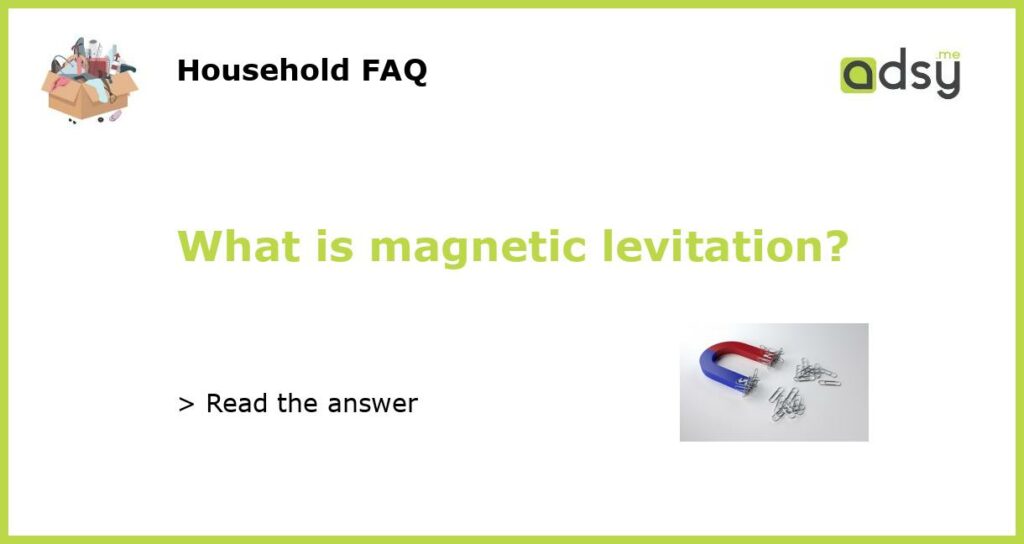Understanding Magnetic Levitation
Magnetic levitation, or maglev for short, is a type of transportation technology that allows vehicles to float above a track using magnetic forces. Instead of relying on wheels or other contact points, maglev vehicles are suspended in the air by magnetic fields, allowing for faster, smoother, and more efficient travel.
How does Magnetic Levitation Work?
Magnetic levitation works by using the same magnetic forces that cause like poles to repel and opposite poles to attract. In a maglev system, the track is equipped with powerful magnets that generate a magnetic field. The maglev vehicle, which has magnets of its own, is attracted to the magnetic field and is lifted off the track.
To maintain levitation, the maglev vehicle is typically equipped with sensors that detect changes in the magnetic field. The onboard control system then adjusts the vehicle’s magnetic field to ensure that it remains at a consistent distance from the track.
Benefits of Magnetic Levitation
One of the primary benefits of magnetic levitation is speed. Since the vehicle is not in contact with the track, there is no friction to slow it down. This allows maglev trains to travel at speeds of up to 300 miles per hour or more, making them ideal for long-distance travel.
In addition to speed, maglev technology is also more energy-efficient than traditional trains. Because there is no friction between the vehicle and the track, less energy is required to propel the vehicle forward, resulting in lower operating costs and a smaller carbon footprint.
Applications of Magnetic Levitation
Maglev technology has a variety of potential applications, including transportation, manufacturing, and medicine. In transportation, maglev trains could be used for high-speed passenger travel as well as freight transportation. In manufacturing, maglev technology could be used for assembly line automation, while in medicine, maglev technology is being explored as a non-invasive way to deliver drugs to specific parts of the body.
The Future of Magnetic Levitation
Magnetic levitation is still a relatively new technology, and there is a lot of room for innovation and improvement. Researchers are currently exploring ways to make maglev systems even more efficient and cost-effective, as well as developing new applications for the technology.
Some experts believe that maglev technology could eventually replace traditional trains as the primary mode of transportation for long distances, while others see it as one piece of a larger transportation puzzle that includes self-driving cars, hyperloops, and other emerging technologies.






